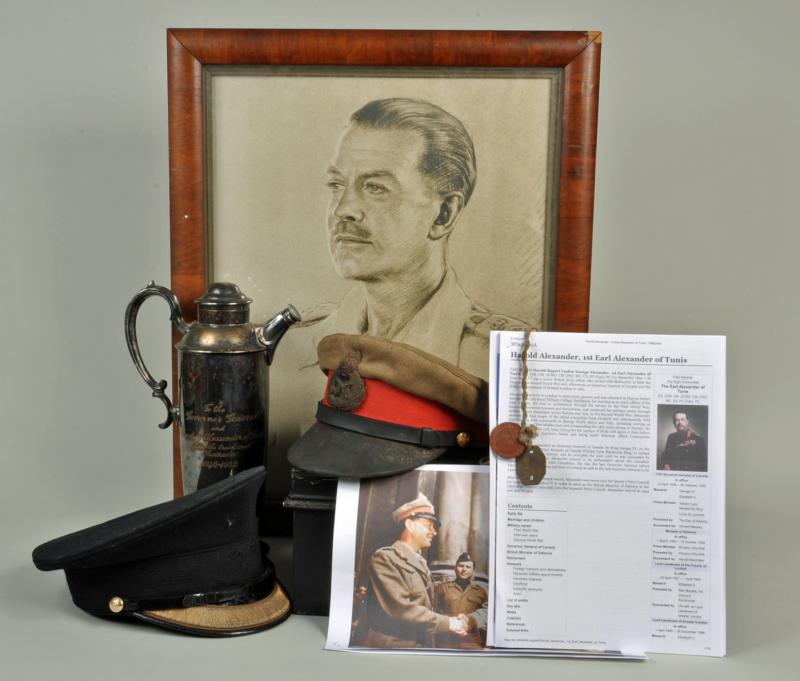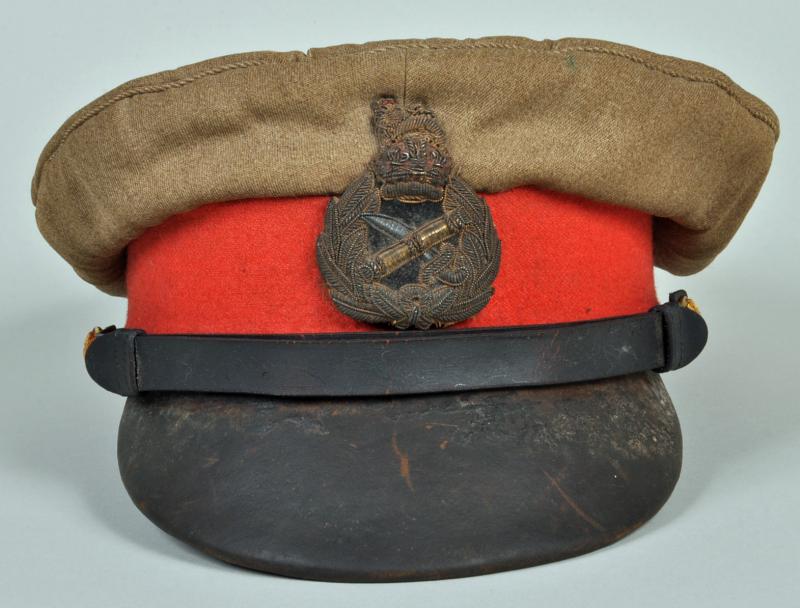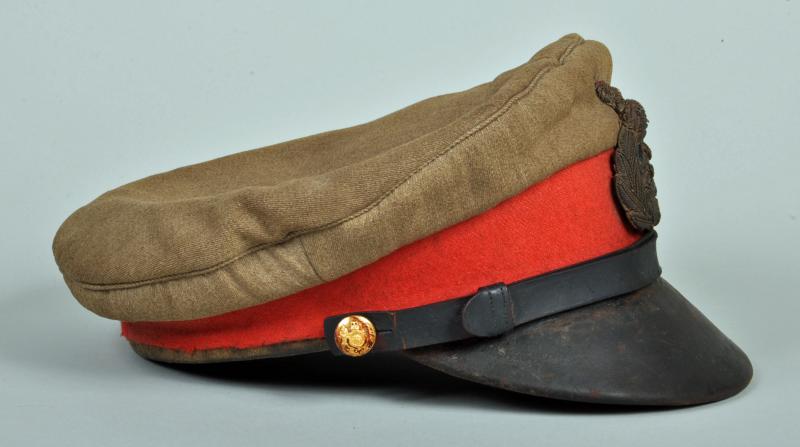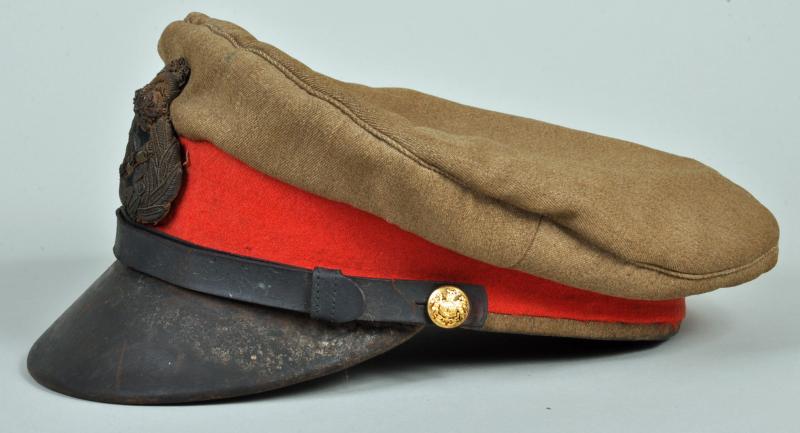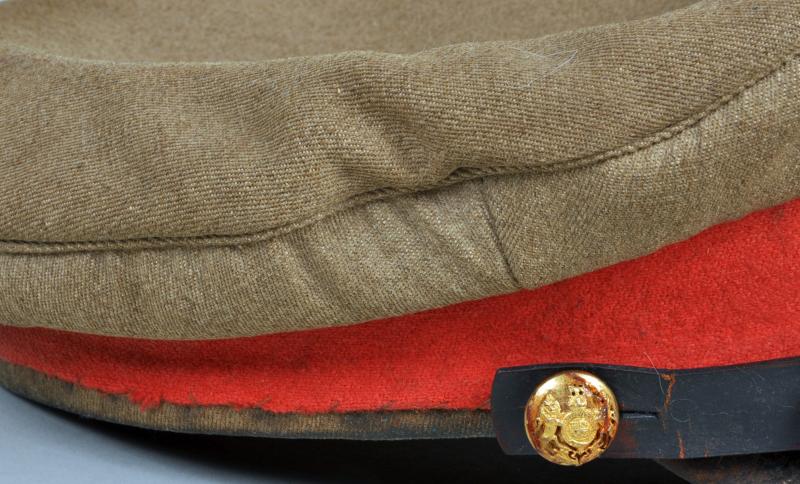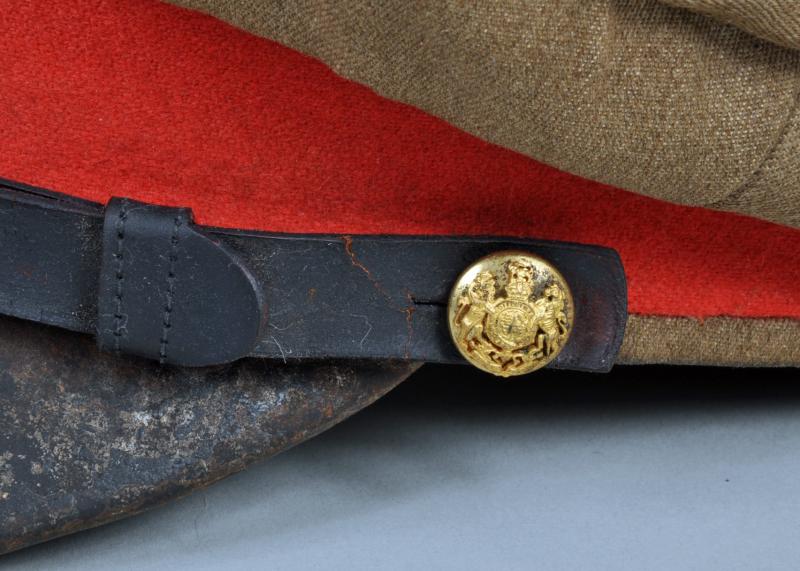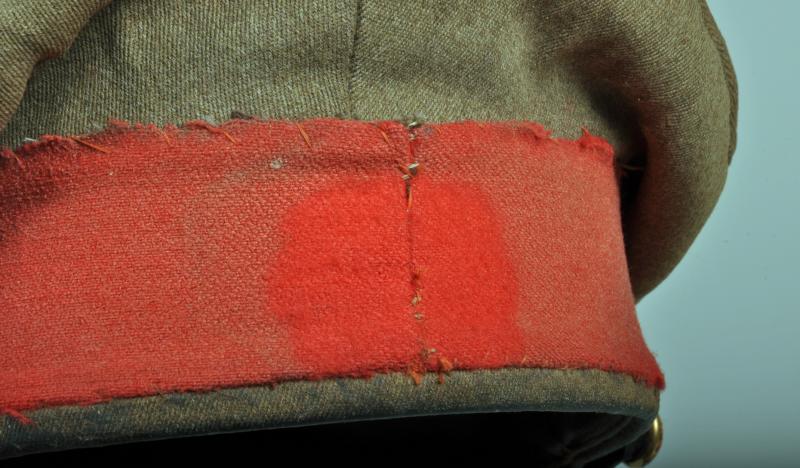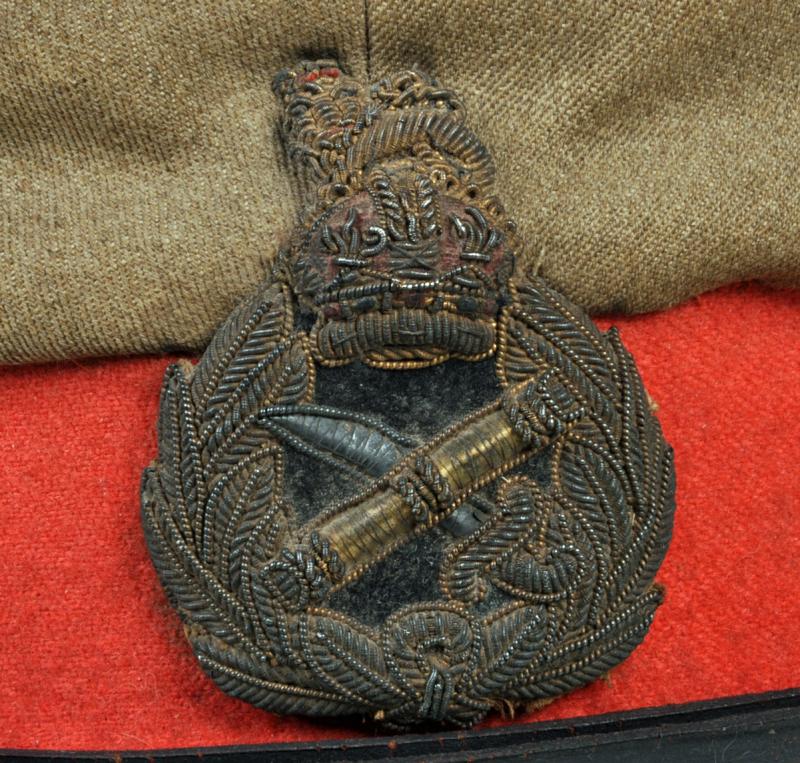BRITISH WWII FIELD MARSHALL HAROLD ALEXANDER’S VISOR CAP.
Possibly one of the rarest items of WWII British militaria we have ever owned, with the exception of the uniforms of Douglas Bader, which we owned 30 years ago. The field service visor cap of Field Marshall Harold Alexander 1st Earl Alexander of Tunis. The visor cap possibly Indian or Egyptian made is a totally different form than standard British Army high ranking officers visor caps, it is the distinctive Guards pattern first purchased by then a junior officer in the Irish Guards, one only has to study the literally thousands of photographs of Harold Alexander in field situations in WWII to recognise this cap immediately. Our interpretation of the cap is that it was initially purchased as a standard guards officers cap, unusually having a plain leather peak and not cloth covered, he had added the Generals rank red band with his bullion wire woven King’s Crown General’s badge . The side buttons are General Service buttons in good gilt and are of the size generally used to secure shoulder boards down on tunics. Standard British officers wide leather strap. On inverting the cap considerable field service use with the faint traces of a gilded maker or retailer to the central crown area but too difficult to read or to interpret. The inner lining originally in a crimson colour, which has faded with use and hair grease markings. The leather sweatband is entirely original to the cap. Just picking up the cap has an intense historical feel to it. There is no moth damage to the cap, there is one tiny stain on the crown, bullion wire of the General’s badge has subdued considerably but the gilt on the side buttons still remains. In the many images of Field Marshall Alexander wearing this cap these larger side buttons being brighter than the rest of the cap can clearly be seen, also the same creasing generally to the lower right hand side of the cap matches identically to the many photographs available. in the excellent Biography of Field Marshall Alexander written by his Junior Aide de Camp Rupert Clarke who served with him from 1941 to 1945 he writes " in the field Alex was always impeccably turned out, on his head he wore his Irish Guards cap embellished with his Red band and Generals badge and often at a rakish angle " within this biography are many images of Alexander wearing the cap, we estimate he wore this cap continuously from the middle 1930,s to 1945, Accompanying the cap are his two British fibre identity tags worn around his neck with his initials and name ‘Alexander’ with the rank of Lieutenant Colonel on their original string suspension. The cap is situated in a japanned tin box with the label to the exterior ‘Reeves Depositories, Camberley’ with the name ‘Lady Alexander’ and the date ‘23rd February 1959’. Also enclosed is a small framed colour photograph of Alexander wearing his RAF sheepskin lined Irvin jacket, hatless, a string of small flags, each flag representing one of the divisions under his command in Italy 43, a coffee or teapot engraved ‘To the Governor General and Vicountess Alexander of Tunic from the Train Crew Canada 1946 to 1952’, a large 51 x 41cm pencil drawing of Alexander, hatless, wearing his tropical uniform with full Generals rank insignia attached to his epaulettes, the pencil drawing signed and dated ‘43’ with a signature ‘H.R.Alexander’ to the side of the artist’s signature, the signature maybe a facsimile. Also within the box is his son’s Irish Guards officers visor cap with the initials ‘B.J.A’ punched into the sweatband but minus the Irish Guards badge. Harold Rupert Leofric George Alexander KG., GCB., OM., GCMG., CSI., DSO., MC., CD., PC (CAN) born December 1891 died June 1969 attended Harrow School before joining the Irish Guards in WWI, received many decorations and honours during WWI. In WWII Alexander was Commander overseeing the final stages of the allied evacuation from Dunkirk and subsequently held high ranking field commands in Burma, North Africa and Italy including serving as Commander-in-Chief Middle East and Commanding the 18th Army Group in Tunisia, he then commanded the 15th Army Group for the capture of Sicily and again in Italy before receiving his Field Marshall’s baton and being appointed Supreme Allied Commander of the Mediterranean. In 1946 he was appointed Governor General Canada and served in that post until 1952 and subsequently was a British Minister of Defence in the Cabinet of Winston Churchill in 1952 and retired from public life in 1954. His military career is virtually unsurpassed and any student of British history of WWII would have known his name and was one of the last personnel on the Eastern mole of the Dunkirk beachhead in June 1940. On the 8th August 1942 Alexander arrived in North Africa to replace General Claude Auchinleck as Commander-in-Chief Middle East Command and at the same time Lieutenant General Montgomery replaced Auchinleck as General Officer commanding the 8th Army. Alexander presided over Montgomery’s victory at the 2nd battle of Alamein and the advance of the 8th Army to Tripoli and was then Supreme Allied Commander in the Mediterranean Centre of Operations. He remained as Commander of the Allied 15th Army Corps until December 1944. At all times throughout the war he was senior in rank of Montgomery. Alexander then received the German surrender in Italy on the 29th April 1945. He was one of the most likeable of British Commanders and had excellent relations with the American Allies. His list of honours and decorations is huge and one can only imagine the momentous decisions that were taken by him and in his presence during WWII wearing this cap.
Code: 79336
8500.00 GBP

